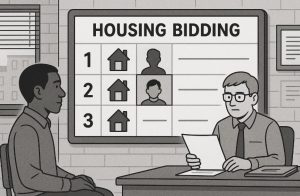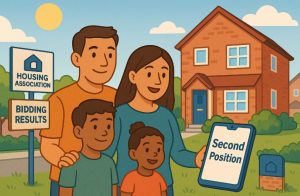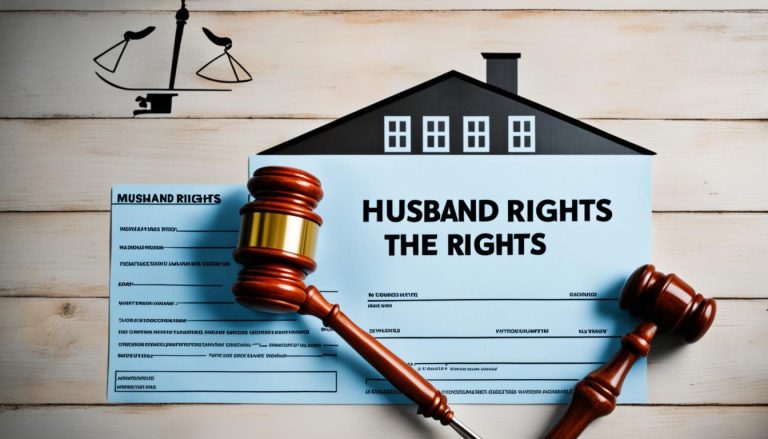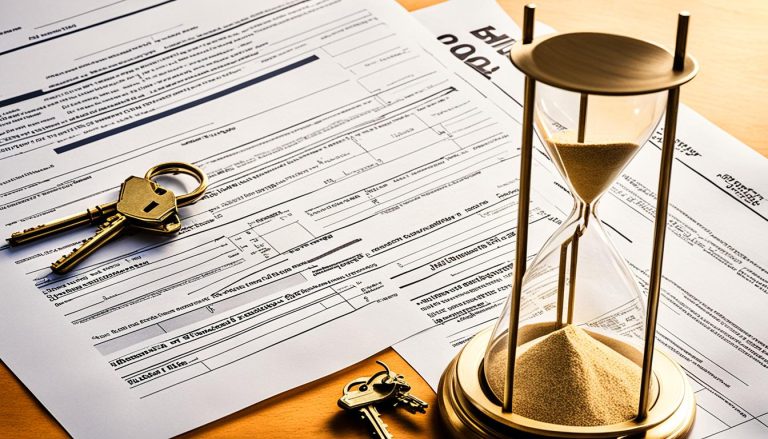Navigating the UK council housing system can be complex, particularly when it comes to understanding your bidding position. If you’ve ever found yourself in second place after bidding for a council house, you might wonder what that truly means for your chances.
This article explains the entire process, from how properties are allocated to what being in second position really implies. With a detailed look at banding systems, shortlist creation, and strategic bidding, we aim to clarify what to expect.
What Does It Mean To Be In 2nd Position When Bidding For A Council House?

When an applicant is placed in second position for a council house, it indicates they are directly behind the top-priority candidate for that specific property.
The council ranks bids based on a combination of the housing band, date of registration, and local connection. If the top applicant either refuses the offer or is found to be ineligible, the property is then offered to the next person on the list — the second-placed bidder.
This position is significant because it reflects a strong level of housing need, as judged by the council’s criteria. While it doesn’t guarantee an offer, it does mean the applicant is close and should continue bidding with confidence. It’s not uncommon for properties to be declined due to personal preferences, unsuitable conditions, or changes in circumstances.
How Does The Council House Bidding System Work?
Most UK councils operate under a system called Choice-Based Lettings (CBL). This allows eligible applicants to bid on suitable properties rather than waiting to be assigned one. The process includes several structured steps:
- Registration: The individual must first apply to the local authority’s housing register and be assessed for eligibility.
- Band Assignment: The council assigns a band that reflects the urgency of the applicant’s housing need.
- Property Listing: Available homes are advertised on the council’s housing portal, usually weekly or fortnightly.
- Bidding: Applicants can express interest by bidding on listed properties they are eligible for.
- Shortlisting and Offers: Once bidding closes, the council generates a shortlist based on banding, registration date, and other qualifying factors.
Properties are typically offered in order of ranking. If the first person declines or is found unsuitable, the offer moves to the next eligible applicant.
What Determines Your Position In The Council Housing Shortlist?
A number of variables contribute to where an applicant lands on the council’s shortlist after bidding:
- Housing Band: This is the primary factor. Those in Band A or B are prioritised ahead of others in lower bands.
- Effective Date: Applicants who have been registered for a longer time will have a stronger position within their band.
- Local Connection: Councils usually favour those who live, work, or have close family in the area.
- Special Needs: Applicants requiring adapted properties or specific housing features may be prioritised differently.
The shortlist is dynamic and created anew for each property, depending on the criteria outlined by the council.
What Is The Housing Priority Banding System And How Does It Affect Your Bid?

The banding system is designed to sort applicants based on the severity of their housing needs. It is a transparent and structured method that allows the council to allocate homes to those who need them most urgently.
| Band | Typical Circumstances |
| Band A | Emergency need (e.g. domestic abuse, dangerous living conditions) |
| Band B | High need (e.g. overcrowding, severe medical issues) |
| Band C | Moderate need (e.g. living with parents, sharing facilities) |
| Band D | Low need (e.g. already in stable housing but requesting a move) |
An applicant’s band has a direct impact on how likely they are to be placed first or second for any given property. Even within bands, the effective date (how long someone has been waiting) helps determine the order of priority.
Applicants are encouraged to update their housing application if their situation changes, as this could lead to a reassessment of their band and potentially improve their council house bidding success.
What Factors Influence Your Chances Of Getting A Council House In Second Place?
While second place is promising, actual success depends on a range of factors. These can either work in the applicant’s favour or delay the opportunity:
- Property Demand: High-demand areas typically have many applicants per property, making it less likely the top bidder will decline.
- Applicant Fit: If the property is adapted for mobility issues, the council must ensure the applicant’s needs match.
- First Bidder’s Response: If the top bidder doesn’t reply within the council’s set timeframe (often 24 to 48 hours), the offer moves to the next in line.
- Documentation Checks: The second-place applicant must still complete verification steps to be eligible for the offer.
Being in second place is often a strong indicator of future success, especially if similar properties become available and the applicant continues bidding regularly.
How Can Declining Or Withdrawing Affect Your Position In Future Bids?
Declining a property offer, whether from first or second place, can have consequences depending on the local authority’s policies.
- Penalties for Multiple Refusals: Some councils may penalise repeated, unreasonable refusals by reducing the applicant’s priority band or suspending their ability to bid for a short period.
- Consideration of Justification: If an applicant provides valid reasons — such as location issues, health considerations, or family obligations — most councils will not impose penalties.
- Automatic Withdrawal: If an applicant fails to respond within the set timeframe, their bid may be withdrawn, and the offer moves to the next in line.
To avoid negative impacts, it is crucial for applicants to respond promptly and maintain open communication with their housing officer.
Can Second Position Be Considered A Good Sign When Bidding For Council Housing?

Yes, being in second position should be seen as a strong indicator of progress in the housing application journey. It suggests the following:
- The applicant’s banding is competitive
- Their housing need is being recognised
- They are close to receiving an offer
Though not a guarantee, being regularly placed in second or third position across multiple bids shows that the application is being taken seriously. With persistence and consistent bidding, a successful offer is often just a matter of time.
What Strategies Can Improve Your Success In Council House Bidding?
Applicants can increase their chances of securing a property by being proactive and strategic. Some effective methods include:
- Widening Property Preferences: Bidding on homes in a variety of areas or with different property types can improve odds.
- Keeping Information Updated: Any changes in household composition, income, or medical needs should be reported immediately.
- Bidding Every Cycle: Consistency is important. Regularly participating in each bidding round ensures ongoing engagement in the system.
- Reviewing Feedback: Some councils provide insight into where you placed in past bids. This can help identify which types of homes are more achievable.
Summary Table: Understanding Your Bidding Position
| Bidding Position | What It Means | Chances of Offer |
| 1st | Top of the list, first to be contacted | Very High |
| 2nd | Next in line if 1st declines or is ineligible | Moderate to High |
| 3rd+ | Lower likelihood unless many ahead decline | Low |
Monitoring Your Bidding Results Online
Most local authorities in the UK provide an online platform where applicants can:
- View available properties
- Track bids they have placed
- Check historical performance, including the position they finished in
- See how many bids were placed on each home
This level of visibility helps applicants understand the competitiveness of the process and make informed decisions when bidding in future cycles.
By monitoring bidding results and patterns, applicants can adjust their strategies — for example, focusing on less competitive areas or types of housing — to improve their ranking over time.
How To Move 2nd Position To 1st Position?

Moving from 2nd position to 1st when bidding for a council house isn’t something applicants can control directly, as the order is based on structured eligibility criteria. However, there are several strategic actions and situational factors that can influence your movement to the top of the list over time.
Strengthen Your Housing Application
To improve your ranking in future bids, it’s essential to ensure your application fully reflects your current situation.
- Update Medical or Welfare Information: If your housing need is related to health or disability, ensure that all medical documents and support letters are submitted. Councils often upgrade bands for verified medical needs.
- Report Any Changes Promptly: Life changes such as job loss, relationship breakdown, or risk of homelessness may qualify you for a higher band.
- Request a Band Review: If your circumstances have worsened since your application, ask for a reassessment of your priority banding.
Choose Properties With Lower Demand
Not all properties attract the same number of bids. Applicants can improve their ranking by targeting homes that typically receive less competition.
- Bid on Less Popular Areas: Properties in outer boroughs or less central locations may have fewer bids, increasing your chance of being 1st.
- Consider Upper-Floor Flats or Smaller Properties: Homes that don’t have lifts, or those with fewer rooms, may receive fewer bids and thus offer higher chances.
- Focus on Age-Restricted or Adapted Homes (If Eligible): If you qualify, bidding on these properties may reduce competition.
Bid Consistently and Widely
Bidding strategically across multiple suitable homes in each cycle helps you spot trends and find properties where you’re more likely to be top-ranked.
- Bid Every Week or Fortnight: Missing a cycle reduces your opportunity to move up the list.
- Analyse Past Bids: Some council portals show your previous bidding position. If you notice properties where you’re consistently 2nd, keep bidding in that category.
- Widen Your Preferences: If you’ve restricted your bid preferences too narrowly (e.g. only 3-bedroom homes in one estate), broadening your choices can increase your exposure to potential offers.
Improve Local Connection or Residency Criteria
Some councils apply local preference rules, giving higher priority to applicants with strong connections to the borough.
- Register for Council Tax or Employment Locally: If you work or live in the area longer than 6–12 months, this could count as a strong local connection.
- Use Family Ties: Some councils consider close relatives as qualifying local links — such as parents, children, or siblings already living in the borough.
Wait It Out (Sometimes It’s About Timing)
Even when you’re second, time can work in your favour. Many applicants in 1st position decline offers due to:
- Changing their minds
- Ineligibility discovered during verification
- Not responding in time
Conclusion
Being in second position when bidding for a council house is not a dead end—it’s often a sign of real progress. While it doesn’t guarantee a home, it places you ahead of many others and close to receiving an offer.
Understanding how the system works, maintaining your eligibility, and bidding wisely can significantly increase your chances of success. With persistence and the right strategy, applicants regularly in second position often go on to secure a suitable property in due course.
Frequently Asked Questions
How long do I have to wait if I’m in second position for a council house?
This depends on how quickly the first bidder responds. Some councils set a 24–48 hour window to accept or decline. If they delay or are unresponsive, the offer can quickly pass to you.
Does second place mean I’ll definitely get offered the property?
No, it means you’re next in line. You’ll only be offered the property if the first applicant declines or is deemed ineligible.
How many people usually bid on a council property?
It varies greatly by area and property type. Popular areas or homes with more bedrooms may receive dozens or even hundreds of bids.
Can my priority band change after I apply?
Yes, if your circumstances change — such as worsening health or homelessness — you can request a reassessment of your banding.
What if someone ahead of me declines—how soon will I know?
If you’re in second place, you could be contacted within a few days if the first bidder declines. It’s important to keep your contact details updated.
How often can I bid on council houses?
Typically, applicants can bid on up to three properties per cycle, but this varies by council. Check your local authority’s specific rules.
Are there differences in bidding systems across UK councils?
Yes. Some councils use different banding names or have specific eligibility criteria. Always check the local housing allocation policy.






